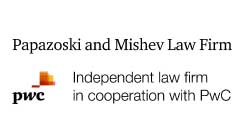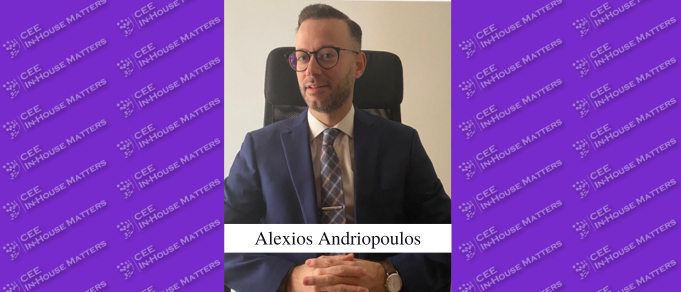On June 3, 2023, CEE Legal Matters reported that CMS helped Global Biomet obtain a license for a photovoltaic plant in its portfolio – the 100-megawatt AC capacity Aratiden project – before the Bulgarian State Energy and Water Regulatory Commission. With it now successfully completed, CMS Sofia Partner Kostadin Sirleshtov reflects on the project.
CEELM: First of all, congratulations on the successful completion of the Aratiden 100 MW photovoltaic project! What was CMS’ role in it?
Sirleshtov: Thank you! We joined the Aratiden project at its very beginning in 2019, participating from its initial development stages on behalf of the developer. Our mandate was to support the project in all legal aspects, including the investor’s ESG program, ensuring that every facet of the project adhered to the highest environmental, social, and governance standards and beyond. Upon completion of the sale of the project to one of the largest Bulgarian renewable energy investors, Global Biomet, CMS continued to assist the new investor in all legal aspects of the project.
CEELM: What was the composition of your team for the project?
Sirleshtov: Given the complexity of the project, it was led by me and Borislava Piperkova, our Head of Renewables at CMS Sofia. I was coordinating the legal aspects of the entire development and the ESG program, while Borislava was taking the lead with the legal due diligence, negotiations with the investors and some of the suppliers, and the financing. Our senior lawyer Elena Yotova-Yordanova was taking the lead with licensing. The three of us were in charge of the tens of litigation cases that were initiated in relation to the project. More than ten Partners and Associates from the office were involved.
CEELM: The project encompasses extensive ESG elements. How did CMS specifically contribute to the environmental aspects, such as conducting dual environmental assessments and establishing ongoing monitoring programs?
Sirleshtov: We played a critical role in facilitating the preparation, completion, and justification of the two independent and comprehensive environmental assessments for the two stages of the project, each spanning 18-24 months. Furthermore, we initiated an ongoing environmental monitoring program that will last for at least three years, ensuring continuous compliance and transparency with Bulgarian environmental authorities. CMS Sofia was also instrumental in implementing all ESG elements of the project, including donations, local governance matters, and the like.
CEELM: What were the most significant legal challenges CMS encountered during the project, particularly concerning the ESG components, and how did your team address and overcome them?
Sirleshtov: One major challenge was addressing appeals from environmental NGOs and neighboring production facilities. We had to ensure that the Environmental Impact Assessments complied fully with both EU and Bulgarian legislation and that the Bulgarian courts adhered to this view. Through meticulous legal work and collaboration with the excellent environmental teams, who prepared these reports, we managed to defend these before the Ministry of Environment and Waters and Bulgarian administrative courts, which confirmed the project’s adherence to best environmental practices.
Additionally, during the project implementation, investors held seven public hearings to present various stages and gather public feedback. These were all organized and led by CMS Sofia.
The land acquisition was conducted transparently, providing fair market compensation to the landowners and this process was also managed by us.
CEELM: The project required navigating complex regulatory frameworks both locally and within the EU. What unique legal considerations did this entail, and how did CMS manage these complexities?
Sirleshtov: Navigating these frameworks demanded a thorough understanding of both local and EU regulations, as well as a deep dive into local municipal regulations. We ensured that all Environmental Impact Assessments met the stringent requirements of EU directives and Bulgarian laws. This involved ongoing dialogue with regulatory bodies and adapting our strategies to comply with evolving legal standards. The assistance of the Bulgarian Transmission System Operator (ESO EAD) and their detailed understanding of the role of the Aratiden project in the green transition of Bulgaria played a crucial role.
CEELM: Risk management was highlighted as a crucial aspect of the project. Can you elaborate on the strategies and parallel working groups your team implemented to effectively manage and mitigate these risks?
Sirleshtov: We set up several parallel working groups, each dedicated to different aspects of risk management, including environmental, legal, and operational risks. This multi-faceted approach enabled us to proactively identify and address potential challenges before they could affect the project. Consequently, by adhering to the high health and safety standards established by Bulgarian legislation, we achieved zero fatal incidents. As a result, the Aratiden project was completed successfully and is now operational in less than five years since its initiation.
CEELM: What about the sustainability initiatives and their importance to the project?
Sirleshtov: In 2022, Aratiden’s developers donated a substantial sum to the Municipality of Kyustendil to create new forests and ensure that no existing forests were used for the project, preserving its sustainability. All generated waste was managed sustainably, with some materials donated to the municipality for dual use. Notably, the Aratiden project requires no water usage during its operational lifetime.
Between 2023 and 2024, Aratiden donated and installed seven rooftop photovoltaic plants on municipal buildings in Kyustendil, enhancing the local electricity supply’s sustainably. Additionally, by paying over EUR 1 million in municipal fees, Aratiden became the largest investor in Kyustendil, contributing more than 10% to the municipality’s local income.
Beyond environmental efforts, the project demonstrated strong social responsibility. In 2019, the developers made a major COVID-19-related donation to the local hospital in Kyustendil. Then, in 2024, they followed up with a significant donation for a modern ambulance for local citizens and tourists. Additionally, Aratiden provides annual donations for traditional celebrations organized by the villages of Dvorishte and Konyavo, as well as for the annual clean-up of local cemeteries.
And, this year as well, the developers invested in refurbishing the road to Dvorishte village which ensured that access to the village is free and undisturbed for all its members, promoting non-discriminatory connectivity and enhancing local infrastructure.
CEELM: From your perspective, what are the most significant achievements of the project in terms of its ESG impact and the legal framework established?
Sirleshtov: The most significant achievements include the expected reduction of carbon dioxide emissions by 237,900 tons over 30 years and the likely generation of 4,350 gigawatt-hours of renewable energy. The project also set an unprecedented benchmark for environmental compliance in Bulgaria by conducting two independent environmental assessments and establishing a rigorous monitoring program.
More than 650 workers and senior management were involved during the implementation of the project. As a result of the investment, Aratiden has created more than 20 new permanent jobs, most of which are filled locally.
CEELM: Looking back at the project, what was, in your view, the key element for success?
Sirleshtov: Our team in Sofia can manage all the legal, ESG, financing, regulatory, environmental, and tax matters about the implementation of the most challenging renewable energy projects from start to finish in record timeframes.
The ESG elements of the Aratiden project were groundbreaking and this was made possible predominantly due to the support of the central and the local government, combined with the solid moral and ethical commitments of the investor. Working as one team with the client contributed to these win-win-win results for the investor, the lawyers involved, and the community.
This article was originally published in Issue 11.10 of the CEE Legal Matters Magazine. If you would like to receive a hard copy of the magazine, you can subscribe here.






















